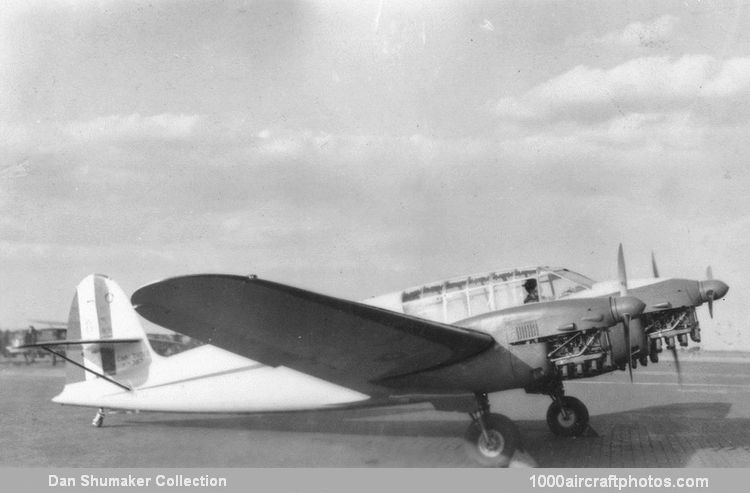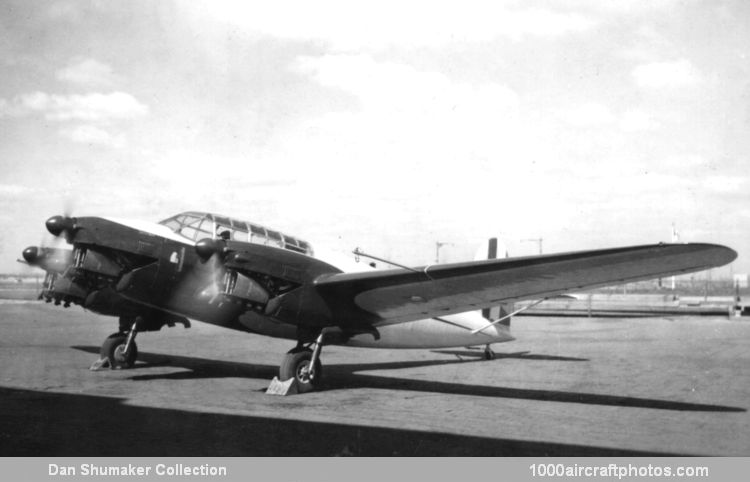09/30/2011. Remarks by Johan Visschedijk: "In 1937, the Air Ministry requested Cantieri Riuniti dell'Adriatico (CRDA) of Monfalcone, Triest, Italy, to study and implement a three-engine touring aircraft. The outcome, designed by Filippo Zappata, was an elegant monoplane with clean lines and great finesse aerodynamics. The Z.1012 was proposed in two versions: the first, a four-seater, was powered by three Alfa Romeo 110 engines (license-built de Havilland Gipsy III), while the second, a six-seater, was powered by three Alfa Romeo 115 (Gipsy VI) engines.
In the Z.1012, albeit on a smaller scale, came together many of the technology and aerodynamics developed for the Z.1007. However, with its executive appearance the aircraft was too far ahead for its time and did not meet the success it deserved. Only six aircraft were sold in three separate orders to the Regia Aeronautica (Royal AF). Five - all but the last – were allotted military serials, while three were also appeared on the civil registry.
The first example, pictured here, was first flown on December 17, 1937, serialed MM367 and fitted Alfa 110 engines. After completing development trials was displayed at the International Aerospace Exhibition at Belgrade, Yugoslavia in June 1938. On September 3, 1938 the aircraft was assigned to Colonel Vincenzo Coppola, Aeronautical Officer at the Italian Embassy in Washington, District of Columbia, USA. After the USA entered WW II, the MM367, then in use by the Aeronautical Officer Colonel Gaeta, was seized at Bolling Field, Washington, in consequence the Beech 17 Traveller (USAAC s/n 39-141 c/n 297) of the US Military Attaché in Rome, Colonel Fiscke, was seized and under Italian s/n MM504 transferred to the Regia Aeronautica on March 22, 1942.
The second example, also fitted Alfa 110 engines, was tested at the end of August 1938, serialed MM368. Subsequently it was registered I-LONG and assigned to the Aeronautical Officer at the Italian Embassy in Rio de Janeiro, Brazil. On July 30, 1942 it was deemed expedient to yield the aircraft to the Brazilian authorities, before the Aviation Officer left Rio de Janeiro. The aircraft was briefly used by the Força Aérea Brasileira (Brazilian AF), before it was transferred to the Brazilian airline VARIG. Registered PP-VAO it was used for liaison and training duties.
The second production batch of two aircraft was powered by Alfa 115 engines. The first aircraft, serialed MM378 was assigned to the Under Secretary of State for the Air Force, General Valle, while the second, initially serialed MM379, was registered on February 3, 1939 to the Ministry of Aviation in Rome as I-IEIA, and went to the Governor of Italian Libya, Italo Balbo, at Tripoli.
The second production batch of two aircraft was powered by Alfa 110 engines. Serialed MM393 the first was assigned to the Comando della Milizia Forestale (Command of Forestry Militia). The second was the only civil owned example, it was registered to Bruno Mussolini of Rome as I-BRUO.
Only two Z.1012s survived to the date of the Italian Armistice on September 8, 1943, MM379 and I-BRUO, both for maintenance at Ronchi dei Legionari airport, near Monfalcone. The following day, September 9, both took off in southern direction, their fate is unknown."
Type: Three-engined four/six-seat cabin monoplane.
Wings: Low-wing cantilever monoplane. One-piece wing tapering in chord and thickness towards the tips. All-wood structure with
single girder spar and plywood covering. Balanced ailerons and slotted flaps between ailerons and fuselage.
Fuselage: Elliptical-section wooden structure. Structure comprises a main keel and a number of longitudinals, interconnected by transverse frames and covered with a plywood skin.
Tail unit: Braced monoplane type. Fin built integral with the fuselage. Tail plane mounted half-way up the fin and braced to the fuselage by single struts on each side. Fixed surfaces covered with plywood. Movable surfaces have wood frames and are covered with fabric. Statically and aerodynamically-balanced movable surfaces. Trimming-tabs adjustable on the ground only.
Landing gear: Retractable type. Each unit comprises two oleo-pneumatic shock-absorber struts, carrying between them a low-pressure wheel. Wheels are raised backwards into the tails on the wing-engine nacelles by hand-wheel. Wheel brakes. Faired swiveling tail wheel.
Power plant: Three 120 hp Alfa-Romeo 110 four-cylinder in-line inverted air-cooled engines. Alternatively, three 185 hp Alfa-Romeo 115 six-cylinder engines may be used. Total fuel capacity 158.5 gal (600 l) in four wing tanks, two on either side of the fuselage. Oil tanks in engine compartments.
Accommodation: Enclosed cabin seating four in two pairs. Pilot on left with single controls. Separate passenger seat alongside. Single cross-seat at the back of the cabin for two further passengers. Door on each side of the cabin. A hinged back to the rear cross-seat gives access to a baggage compartment. Parachutes carried in backs of seats and doors may be jettisoned for emergency exit.

